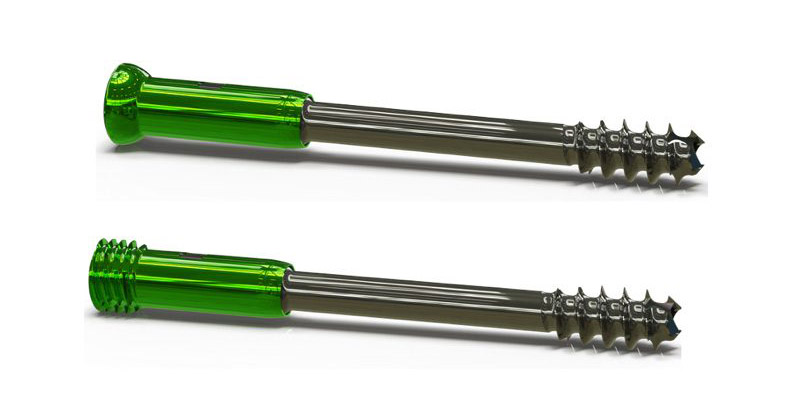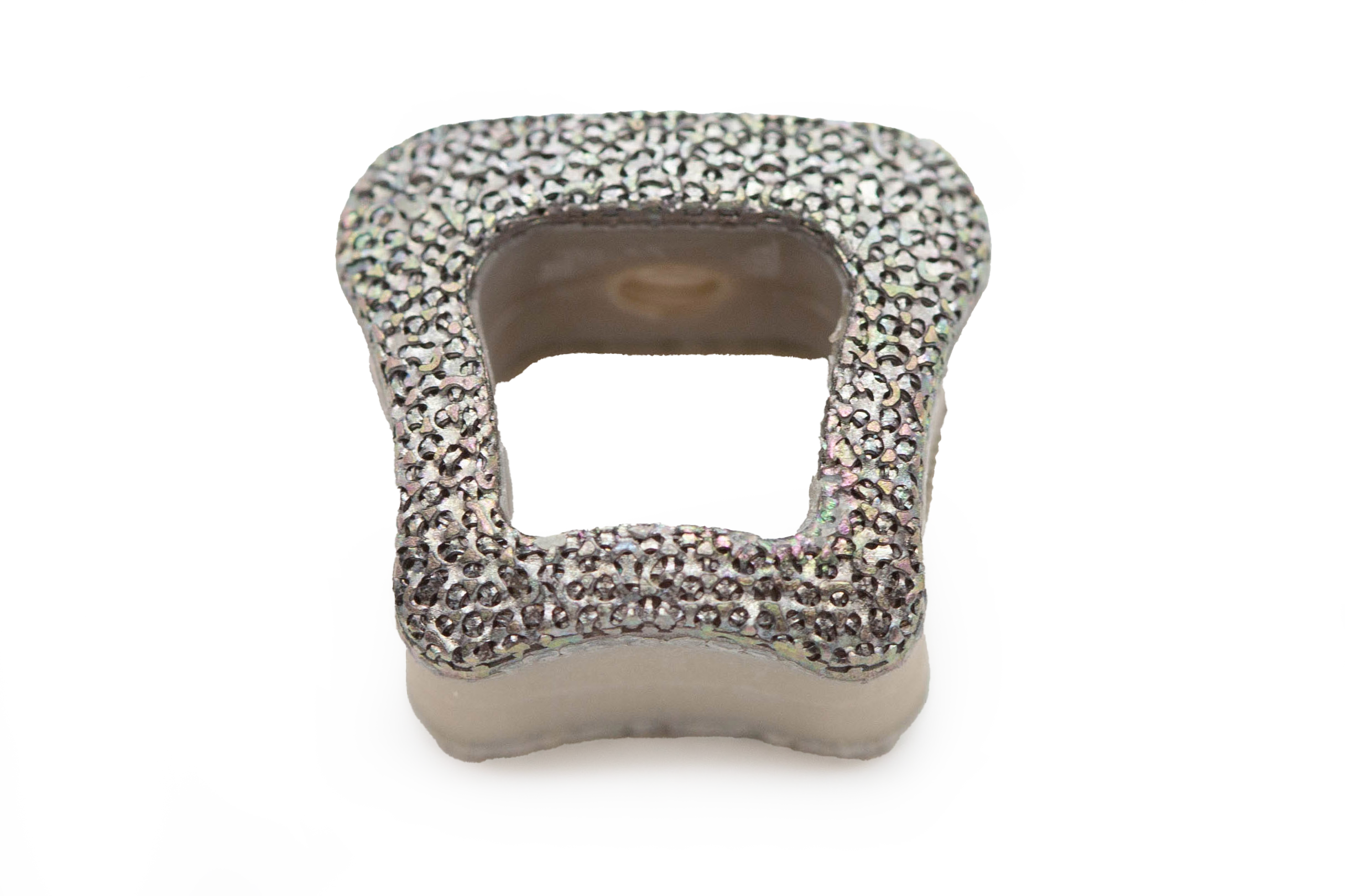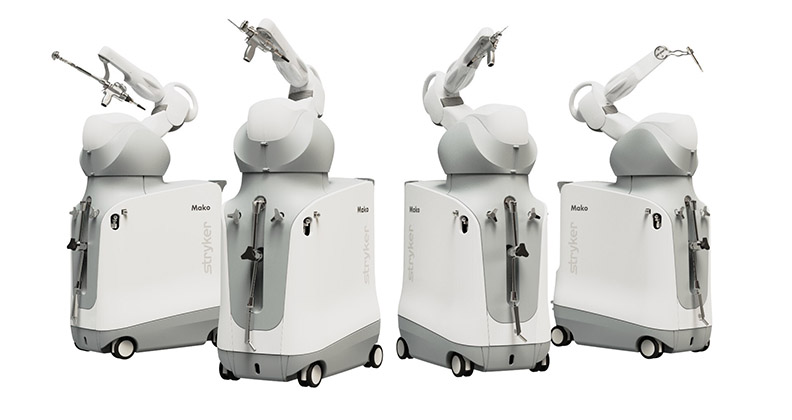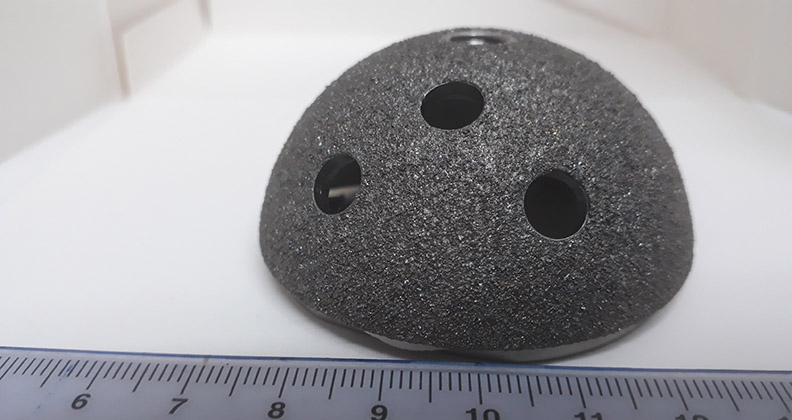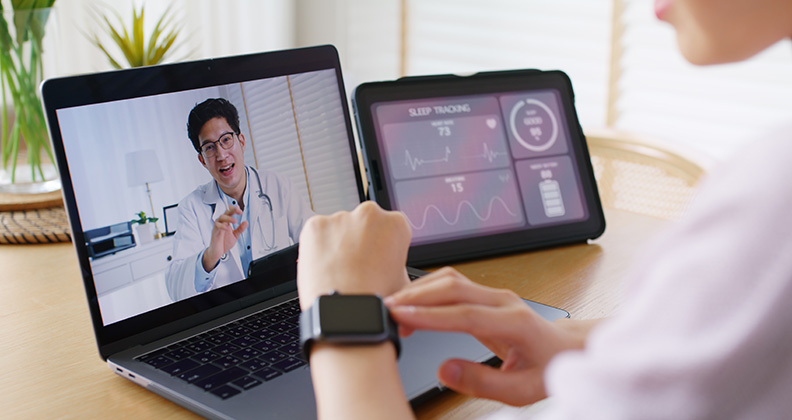
Sharat Kusuma, M.D., had his tongue planted firmly in cheek when he said that orthopedic surgeons are the cavemen of surgery for using brute force instead of brawn to solve clinical challenges. But he believes one aspect of the healthcare delivery model that belongs in the Stone Age is no laughing matter.
“Making joint replacement patients who are recovering well from their surgeries return to the clinic six weeks after surgery for an in-person follow-up visit is archaic,” said Dr. Kusuma, President of JointMedica and Chief Strategy and Medical Officer at Exactech. “The orthopedic industry could do a much better job in reducing that burden of patient management.”
Communication apps, wearable devices and remote monitoring dashboards are helping orthopedic practices better manage entire episodes of surgical care — and the market sees value in the technology. Grand View Research reports that the remote patient monitoring market size was an estimated $5.2 billion in 2023 and expects to see a CAGR of 18.6% from 2024 to 2030.
In contrast to remote therapeutic monitoring, for which patients self-report their health status, remote patient monitoring involves patients wearing a device that continuously relays information back to their care team. This technology can be utilized preoperatively to establish a baseline understanding of a patient’s physiology and daily movements, and postoperatively to monitor the same information.
“Remote monitoring offers a more proactive approach to patient care, especially in orthopedics,” Dr. Kusuma said. “By tracking a patient’s activity and overall health status before and after procedures, we can tailor our interventions more precisely, ensuring patients are optimally prepared for surgery and recover more effectively afterward.”
Constant Contact
Remote monitoring allows surgeons to maintain connections with patients while reducing the need for clinic visits, noted Ahmed Siddiqi, D.O., a joint replacement specialist and partner at Orthopedic Institute Brielle Orthopedics.
Dr. Siddiqi uses a monitoring platform to track post-op patient-reported outcomes. “This approach not only improves patient compliance, but also enables us to manage a larger volume of cases more efficiently, leading to better outcomes and higher patient satisfaction,” he said.
Dr. Siddiqi’s interest in remote patient monitoring was sparked during the COVID-19 pandemic, which underscored the need to minimize in-person visits while ensuring high-quality care. These systems go beyond telehealth check-ins; they allow for a more comprehensive and objective assessment of a patient’s well-being.
The remote care platform in use at Dr. Siddiqi’s practice is designed to enhance patient preparation for surgery and post-op recovery.
Patients are first exposed to the platform one month before their scheduled procedures when they receive comprehensive education and customized instructions for its use. After this introduction, the platform keeps patients engaged through constant reminders and touchpoints, including quizzes on recently watched content, validated questionnaires and prompts to ensure that they are ready for surgery.
“This constant engagement not only prepares them mentally and physically for surgery, but also significantly boosts their compliance with care plans,” Dr. Siddiqi said.
Postoperatively, the platform sends customized check-ins regularly to patients, asking them about their mental and physical health. It provides details about physical therapy regimens and information that can help to preemptively answer questions patients might have about their care. The system also allows for back-and-forth communication among patients and their providers.
The program boasts an impressive compliance rate, even among older, less tech-savvy patients, reflecting its user-friendly design. “It’s truly incredible to see patients of all ages following the suggested care pathways,” Dr. Siddiqi said. “They know we’re watching, and that gives them confidence in the care they receive.”
By capturing patient-reported outcomes, mental well-being metrics and other data, remote care platforms provide a holistic view of patient health that can be monitored and adjusted virtually. This approach not only enhances patient engagement but also scales the volume of patients that surgeons can see in the clinic and lets them focus their attention on those who need in-person care the most.
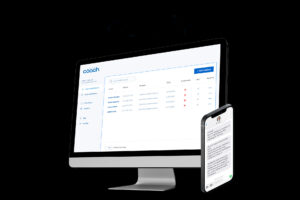
Exactech’s exacCoach platform sends automated text messages to joint replacement patients to keep them informed before and after surgery.
Informed Decisions
Dr. Kusuma, who worked full-time on Apple’s Health team at their world headquarters in California, was an initial leader of the Apple and Zimmer Biomet partnership that developed the mymobility platform. He credits these formative and in-depth product development experiences with giving him a deep understanding of remote monitoring’s potential to optimize patient outcomes.
He argues that orthopedic surgeons have traditionally been reactive, primarily basing decisions on a patient’s health history. In contrast, remote monitoring allows for the tracking and analysis of patients’ baseline activity levels and overall health status.
“Surgeons often make preoperative decisions for total hip or knee replacements based on a simple x-ray and patient history during an office visit, which is far from ideal,” Dr. Kusuma said. “With remote monitoring, they could objectively track a patient’s activity for several months before surgery to get a much clearer picture of how their knee or hip arthritis is impacting their lifestyle, and whether joint replacement surgery would genuinely improve their quality of life. We now have data demonstrating that patients with severe radiographic arthritis who experience limited pain and remain highly active may end up dissatisfied with a knee replacement.”
Dr. Siddiqi noted that his practice’s communication platform allows patients to easily reach out with questions or concerns and receive timely responses. This continuous communication not only reassures patients, but also prevents unnecessary clinic visits.
Additionally, remote patient monitoring supports multidisciplinary care coordination, which is increasingly important as more orthopedic procedures move to outpatient settings. Dr. Siddiqi’s platform, for instance, allows different healthcare professionals — from clinical assistants to physical therapists — to access and contribute to patient care plans.
The technology can also alert the care team during the postoperative period if a patient’s activity levels drops or if physiological markers, such as heart rate, indicate potential issues that require immediate follow-up. These systems can save time and resources while maintaining high-quality patient care.
“Modulated activity is key after joint replacement surgery. We don’t want patients to sit on the couch and do nothing,” Dr. Kusuma said. “But on the flip side, we don’t want them to overdo it. With an active monitoring device, we can observe their activity patterns, which informs our care decisions.”
For instance, a joint replacement patient might call a surgeon’s office because their knee is swollen during recovery. The surgeon could access the monitoring dashboard to see that they’ve been completing 10,000 steps a day and might suggest that the patient cut back on physical activity. Alternatively, the surgeon could use the platform to avoid unnecessary post-op follow-up appointments for patients who are recovering well.
Possibilities and Challenges
The latest wearable devices go beyond simple step counting to offer deeper insights into a patient’s recovery status. Exactech’s exacCoach platform integrates patient wearables, mobile applications and chatbot texting to measure a patient’s activity level and track a joint’s range of motion. The data provides a comprehensive view of a patient’s recovery, enabling surgeons to confidently determine whether further physical therapy is needed or if patients can continue their recovery independently.
Despite the benefits of remote care platforms, Dr. Siddiqi and Dr. Kusuma acknowledge the challenges in implementing and maintaining the systems.
Dr. Siddiqi pointed to the issue of accessibility, noting that while his practice’s remote monitoring program boasts a compliance rate of over 90%, a small percentage of patients lack the necessary technology or struggle with using it. This challenge is particularly pronounced among elderly patients who may not be as tech-savvy and yet are often the ones who need these tools the most.
There are also significant operational and reimbursement challenges associated with digital technology. “The primary hurdles in implementing these systems are the diversity of devices and the inconsistent reimbursement practices,” Dr. Kusuma said. “With different operating systems and insurance plans, deploying a standardized platform is difficult, which has been a barrier to more widespread adoption.”
Dr. Kusuma added that while orthopedic companies have traditionally excelled in developing mechanical implants, they have struggled with the transition to software-driven solutions. Unlike other medical fields, such as the cardiac rhythm market — where innovation in device development is incentivized through premium reimbursement — orthopedic innovations often face resistance due to cost constraints. Hospitals, doctors and patients are hesitant to bear the additional costs, which stifles the adoption of new digital technologies.
Looking to the Future
Despite these challenges, experts see tremendous potential for emerging technologies to further enhance patient care.
“The future of remote care in orthopedics lies in integrating advanced monitoring technologies with predictive analytics,” Dr. Siddiqi said. “By merging patient-reported data with real-time activity tracking, we can create smarter, more responsive platforms that actively engage patients and anticipate their needs throughout episodes of care.”
Dr. Kusuma envisions a future in which pre- and postoperative data will be used to predict and improve patient outcomes. By analyzing recovery trends and comparing them to historical data, surgeons will have the ability to tailor care plans to the needs of individual patients.
While the deployment of wearable devices and securing reimbursement pose significant challenges, emerging technologies are beginning to address these issues. Dr. Kusuma highlights innovations like Canary Medical’s embedded sensors in knee implants (which improve patient compliance by eliminating the need for external devices) and Emovi’s AI-powered gait analysis system (which optimizes implant alignment using the device and a regular treadmill) as promising glimpses into the potential of the field.
“As we continue to refine these technologies and overcome current obstacles, remote care platforms offer a significant opportunity for the orthopedics industry,” Dr. Kusuma said. “By harnessing the power of data, we can deliver more personalized, efficient and effective care to ultimately transform the patient experience.”
KK
Kendal Kloiber is a contributing editor.

